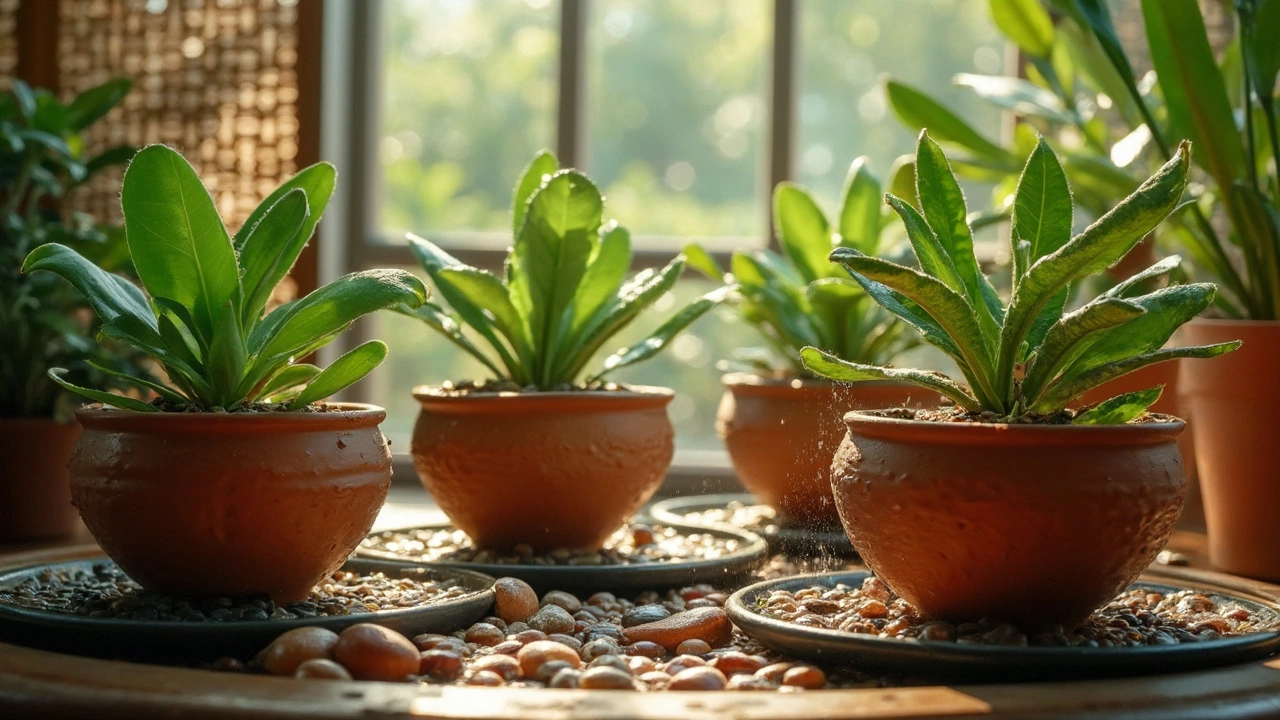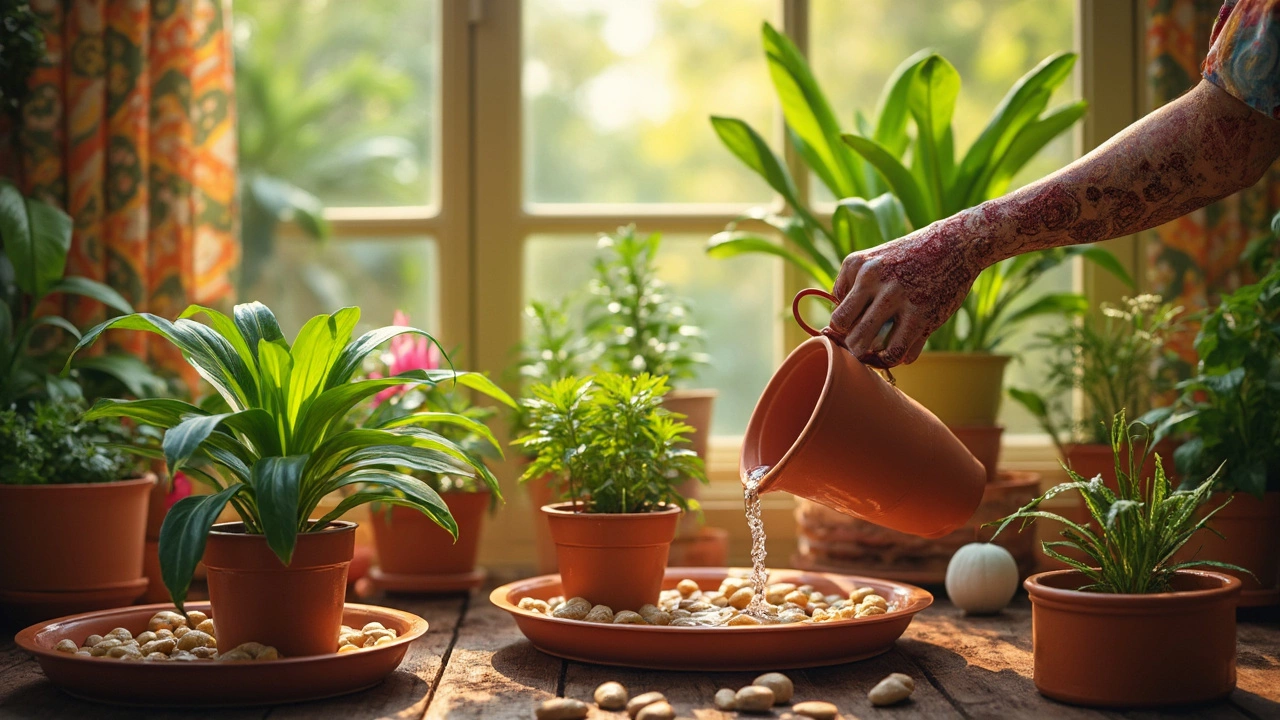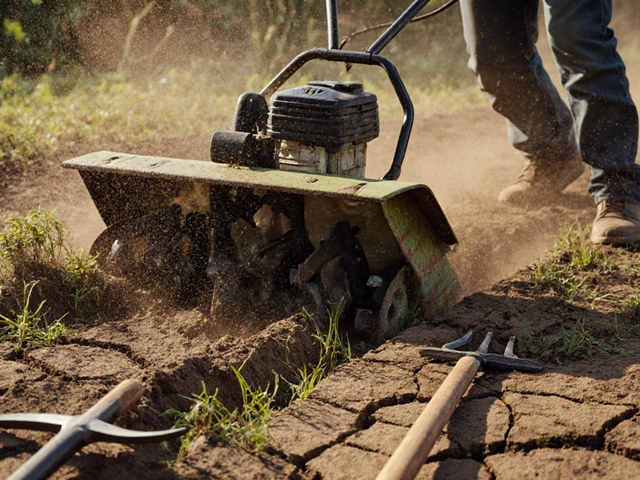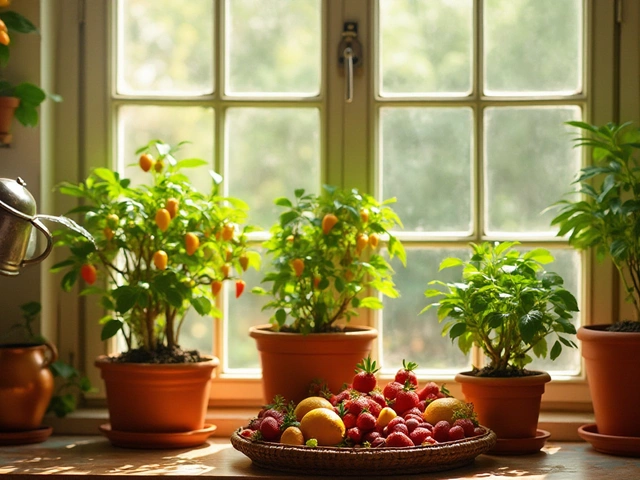Ever wondered why your tropical houseplants keep getting crispy tips, even when you water them just right? Pebble trays might look like plant spa accessories, but they’re actually a down-to-earth way to fix dry indoor air. Basically, you set a shallow tray, fill it with pebbles, pour in some water, and place your plant pot on top. The whole idea is to add a bit of extra humidity right where your greenery needs it most—no fancy gadgets required.
The real question: how often do you actually need to fill that tray? Here’s where things get practical. Most folks top up every 2-4 days, but that window can shrink fast in summer, especially if your heater or AC is blasting nearby. The water disappears quicker in dry rooms or with warm airflow, but can linger almost a week if your home is naturally humid. It’s all about spotting when that water level drops below the pebbles. Don’t just set a schedule—peek at your tray when you water your plant, and if the pebbles look dry or you hear zero sizzle when you add water, it’s refill time. Easy routine, big payoff for your green pals.
- What Is a Pebble Tray and Why Use One?
- How Often Should You Fill the Tray?
- Simple Signs It’s Time to Refill
- Mistakes to Avoid with Pebble Trays
What Is a Pebble Tray and Why Use One?
A pebble tray is just what it sounds like: a shallow tray filled with pebbles or small stones, topped with water, that sits under your potted plant. The main job of a pebble tray is to bump up the humidity around your plants—a simple fix for dry, heated, or air-conditioned rooms where plants struggle most. When water evaporates from the tray, it sneaks a little extra moisture into the air right around your plant's leaves.
This trick isn’t just for fancy ferns and tough-to-please orchids. Tons of common houseplants like pothos, calatheas, and philodendrons thrive when humidity goes up a notch or two. If you’ve spotted crispy leaf edges or droopy growth on your indoor plants, low humidity might be the culprit. A pebble tray offers an easy, dirt-cheap way to give your plants a better shot at growing lush and healthy—no need for a humidifier.
Here's a quick breakdown of why many indoor gardeners go for this method:
- Boosts local humidity right at your plant's base, where it matters.
- Stops pots from sitting in pooled water, which helps prevent root rot.
- Makes maintenance easy—you just top off with water when the tray dries out.
- Fits under most pots, so it doesn't hog shelf space.
- Doesn’t need electricity or special equipment.
Some actual numbers help spot the difference. Check out this comparison:
| Setup | Average Humidity at Plant | Risk of Root Rot |
|---|---|---|
| No tray | 30-40% | Low |
| Pebble tray | 40-55% | Very low |
| Regular humidifier | 45-65% | Low |
So if you’re not ready to splurge on a humidifier or want a low-effort fix, a pebble tray just makes sense. No mess, no fuss, just basic science working for your indoor jungle.
How Often Should You Fill the Tray?
This one depends a lot on your home’s air and what time of year it is, but there are a few ground rules you can lean on. First off, check your pebble tray about twice a week if your plant is in a sunny window or next to a heater. If your space is pretty humid or cool, once a week might cut it. Basically, when the water is gone or hiding below the top of the pebbles, it’s time to fill up.
Humidity levels, temperature, and airflow will change how fast that water disappears. During winter with the heater running, or if you're running an air conditioner, water can dry up in just a day or two. But in a humid bathroom or shaded corner, you might not need to refill for five or six days.
Here’s a quick breakdown to help you dial it in:
| Room Conditions | Refill Frequency |
|---|---|
| Dry/Heated in Winter | Every 1-2 days |
| Sunny/Direct Sunlight | Every 2-3 days |
| Normal Room (Moderate Humidity) | Every 3-4 days |
| Humid Room (e.g., Bathroom) | Every 5-6 days |
Instead of sticking to just a schedule, get in the habit of peeking in the tray when you water your plants. If the pebbles look dry or the water is below their tops, top off the tray. Don't let it get totally dry for long—without water in the tray, your plants miss out on that local humidity boost.
- Use filtered or distilled water to prevent mineral buildup, especially if your tap water is hard.
- If you see green slime (algae) or a sour smell, dump the water, wash the pebbles, and start fresh. It’s quick and keeps things clean.
- Mark a reminder on your phone if life gets busy—it’s easy to forget but only takes a minute.

Simple Signs It’s Time to Refill
Not sure when your pebble tray really needs more water? You don’t need to guess or use some complicated test—just keep an eye out for these signs and your indoor plants will thank you. Here’s how people in the know keep their trays doing their job without fuss.
- Pebble tray is bone dry. If the water level drops below the tops of the pebbles or you can’t spot any shine at the bottom, it's definitely time to pour more in. The goal is to have water barely touching the bottom of the plant pot but not soaking the roots directly.
- No condensation or humidity bump. If you don’t see a little bit of moisture or fog collecting under the leaves closest to the tray, humidity might be too low—top up the water to repeat that humidifying effect.
- The tray's pebbles feel dusty or chalky. This usually means water has totally evaporated. Time for a refill and a quick rinse if there’s any white mineral buildup.
- You notice crispy leaf tips even with regular watering. If your plant’s leaves start looking parched, your tray isn’t holding enough water to do its job. Check it right away.
- Water makes a hissing or fizzing sound when added. Oddly satisfying, but it’s a sign the pebbles are super dry and soaking it right up. That’s your refill alarm.
The easiest way to stay on top of things? Just glance at the tray each time you water your plant, or at least every couple days. Some folks get into a rhythm and top up on set days, but honestly, a quick look beats a schedule. If your house is especially dry, consider keeping a small bottle of water nearby for easy refills. You’ll save your plant—and yourself—some headaches.
Mistakes to Avoid with Pebble Trays
Folks mess up pebble trays way more than you'd think. Ignoring these common mistakes won’t just make the tray less effective, it could even do more harm than good to your indoor plants.
- Pebble tray dunked in water: The pot should sit on top of the pebbles, not sit in the water itself. If the pot stands in water, you’re begging for root rot—the absolute enemy of healthy plants. Keep the roots dry but the air humid.
- Letting water sit too long: When you see green slime or smell something funky, that’s a sign bacteria or algae are moving in. Change the water once a week, and scrub out the tray and pebbles every couple weeks to stop mold in its tracks.
- Forgetting about airflow: Trapping humidity between the plant and the tray can encourage fungal issues. Put trays in a spot where there’s a bit of air movement (not in a stuffy corner or behind thick curtains).
- Filling with chlorinated tap water only: Hard tap water can leave crusty deposits on pebbles. Use filtered, distilled, or let tap water sit out overnight before pouring it in.
- Using tiny or shallow trays: If your tray dries out in a day, it’s too small. A tray with about an inch of water and enough pebbles to keep your plant high and dry will make life easier.
Ever wonder if all this rinsing and changing water is really needed? It’s not just tidiness. Studies on moisture trays show that standing water is a top cause for indoor mold around houseplants (Environ. Microbiol. Rep. 2019). For a little perspective, have a look at how long water typically lasts in popular indoor climates:
| Indoor Condition | Average Tray Water Lasts |
|---|---|
| Heated Room (Winter) | 2-3 days |
| Air-Conditioned (Summer) | 2-4 days |
| Humid Room / Bathroom | 5-7 days |
It’s also a mistake to forget the tray altogether. Dust, debris, or dead leaves can clog the space between pebbles and stop evaporation. If you spot buildup, give everything a rinse. The best way to remember? Just check the tray whenever you water the plant or wipe the leaves. Set a phone reminder if you’re the forgetful type.





